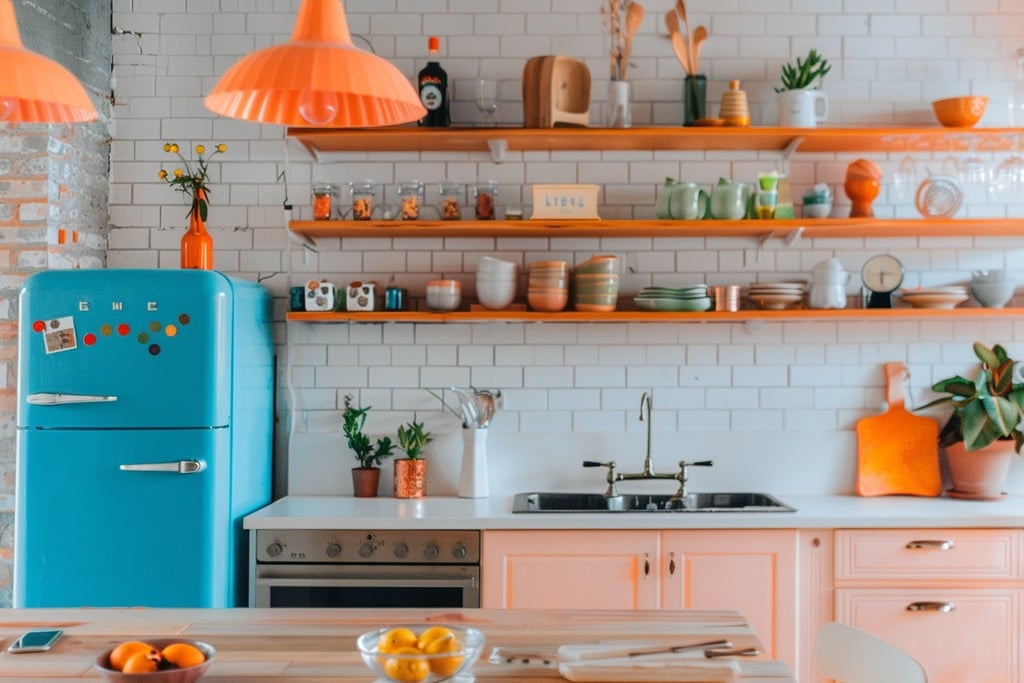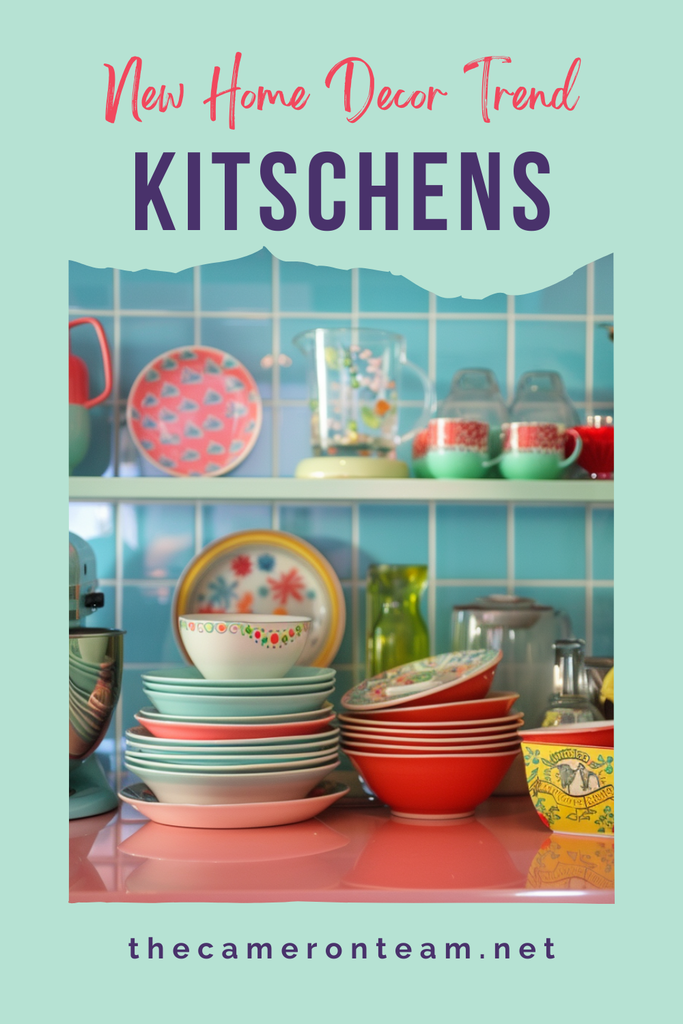In the ever-evolving world of home decor, the kitchen—a space traditionally dedicated to function over form—has recently been subjected to one of the most vibrant and playful trends to hit the interior design scene: the Kitschen (kitschy kitchen). Originating from the German word “Kitsch,” which not so affectionately translates to “bad taste,” this trend boldly reclaims the term, celebrating a sense of whimsy, nostalgia, and vibrant flair that challenges the minimalist and often monochrome aesthetics that have dominated recent years.
Please note: The Cameron Team has not been paid or received any other compensation to include any of the products featured on this post, but the author has included affiliate links and content. If you click on a link, they may earn a commission – a high-five for great content!
The Allure of Kitsch: A Dive into Delightful “Bad Taste”
At its core, kitsch is about embracing the unconventional, the overly ornate, and the joyously tacky elements of decor that bring personality and life into a space. In the context of kitchens, this translates to an explosion of color, an eclectic mix of patterns and textures, and a nod to nostalgic eras gone by. But how does one transform the heart of the home into a kitschy haven without overwhelming the senses? Let’s explore.
1. Adding Lots of Color
The first step in cultivating a kitschy kitchen is to infuse it with color. Vibrant hues and unexpected color combinations can turn the space into a visual feast. Think candy apple reds paired with mint greens, sunny yellows against sky blues, or even a spectrum of pastels that bring a soft but playful energy to the room. The key is to choose colors that make you happy and spread them liberally throughout the space.
2. Mixing In Patterns
Patterns play a pivotal role in achieving the kitsch aesthetic. Polka dots, stripes, florals, and geometric shapes can coexist harmoniously in a kitschy kitchen. Tablecloths, dish towels, and even upholstered kitchen chairs can serve as canvases for these patterns. When mixed thoughtfully, patterns add depth and interest, telling a story of eclectic elegance.
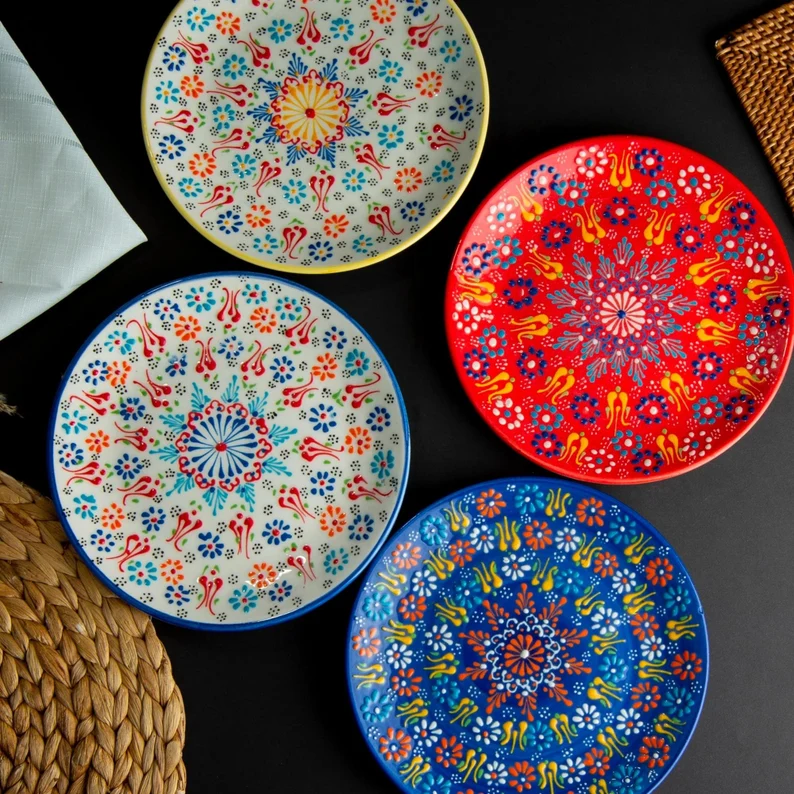
Shubugo – Handmade Turkish Ceramic Plate

EnamelHappy – Enamel Flower Mug Set
3. Choosing Funky Food-Inspired Accessories
What better way to celebrate the essence of a kitchen than with food-inspired accessories? From vintage salt and pepper shakers shaped like avocados to a collection of kitschy teapots or cookie jars, these playful items not only serve a functional purpose but also add a layer of fun and whimsy to the decor. Look for accessories that spark joy and conversation.
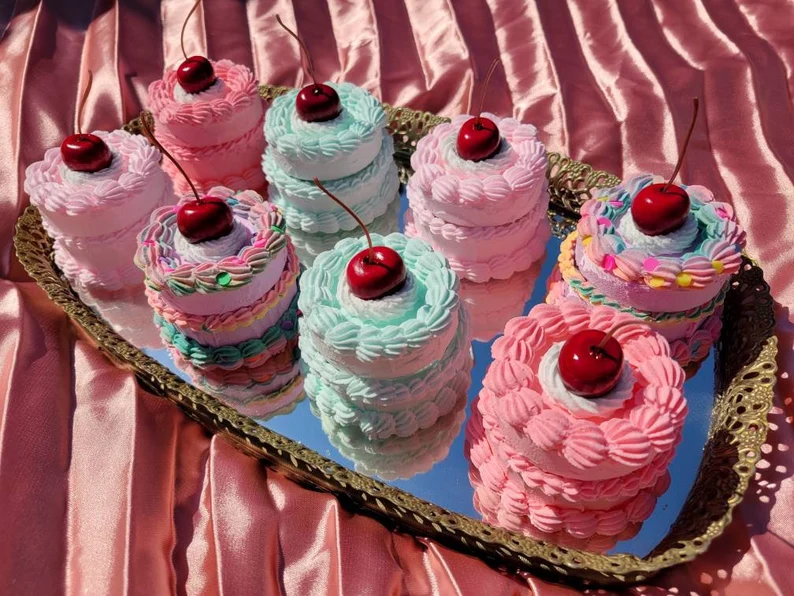
ButtercreamDaydream – Fake Cake Jar

MerkintileVintage – Stack of Pancakes Ceramic Salt and Pepper Shakers
4. Incorporating Retro Pieces
Retro appliances and decor pieces are the backbone of a kitschy kitchen. A pastel-colored fridge, a vintage-style mixer, or mid-century modern chairs can anchor the space in a bygone era while providing modern functionality. Flea markets and thrift stores are treasure troves for these nostalgic finds, each piece adding its own story and charm to the kitchen.
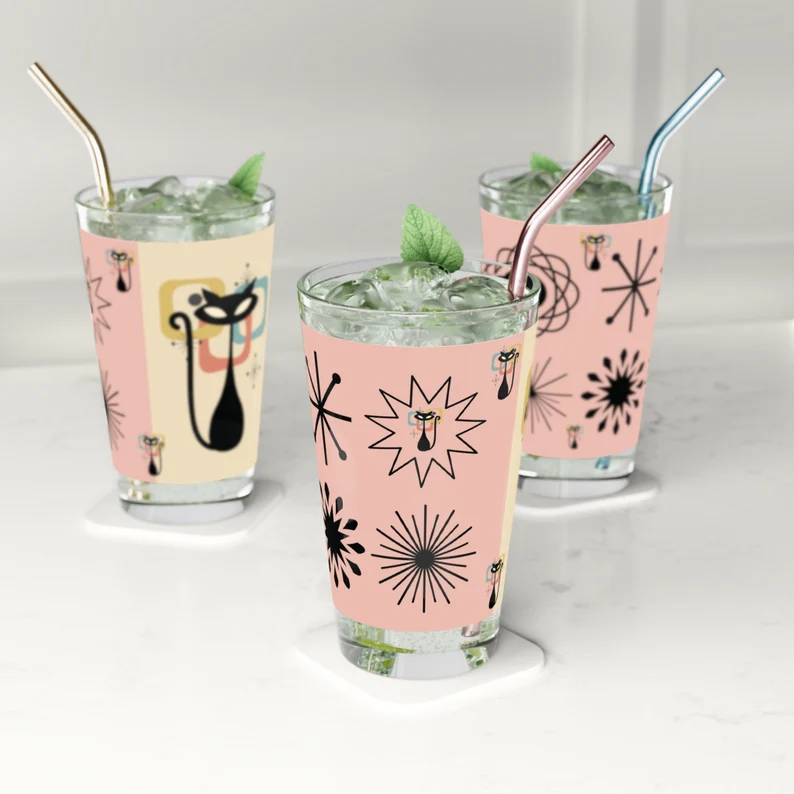
MrsByValle – Pink and Yellow Retro Atomic Cat 16oz Pint Glass

CopperPotVintage66 – Vintage Lefton Poppy & Wheat Kitchen Canister Set
5. Hanging Art in the Kitchen
Art isn’t just for living rooms and galleries; it has a place in the kitchen too. Whether it’s bold pop art, vintage food advertisements, or playful illustrations, art can add a layer of sophistication to the kitschy aesthetic. Hang pieces that resonate with you, and don’t be afraid to mix high and low art for a gallery wall that’s uniquely yours.
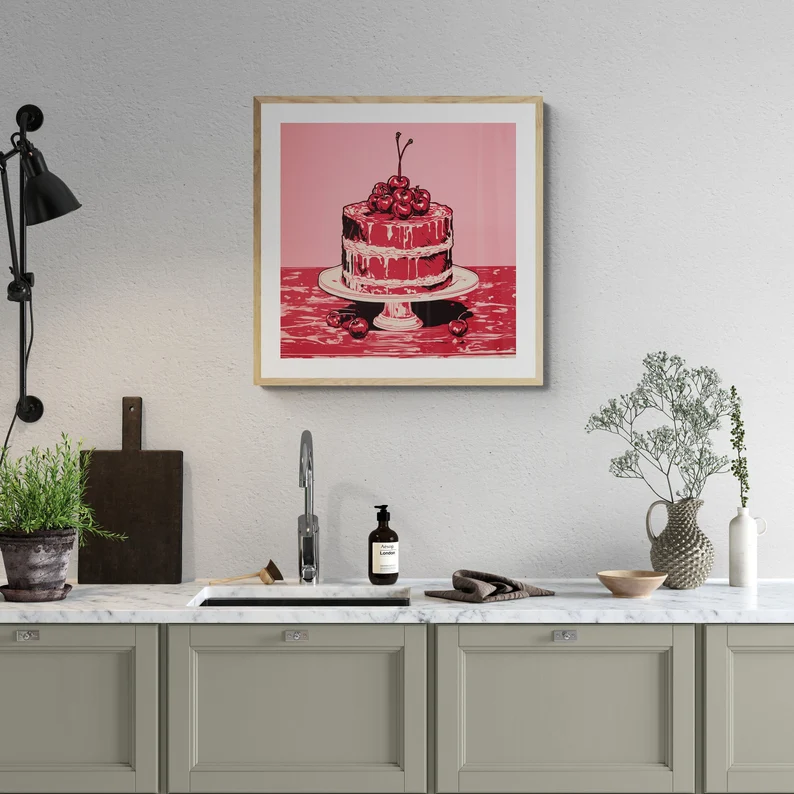
TheShyHound – Vintage Cherry Cake Lithograph Art Printable
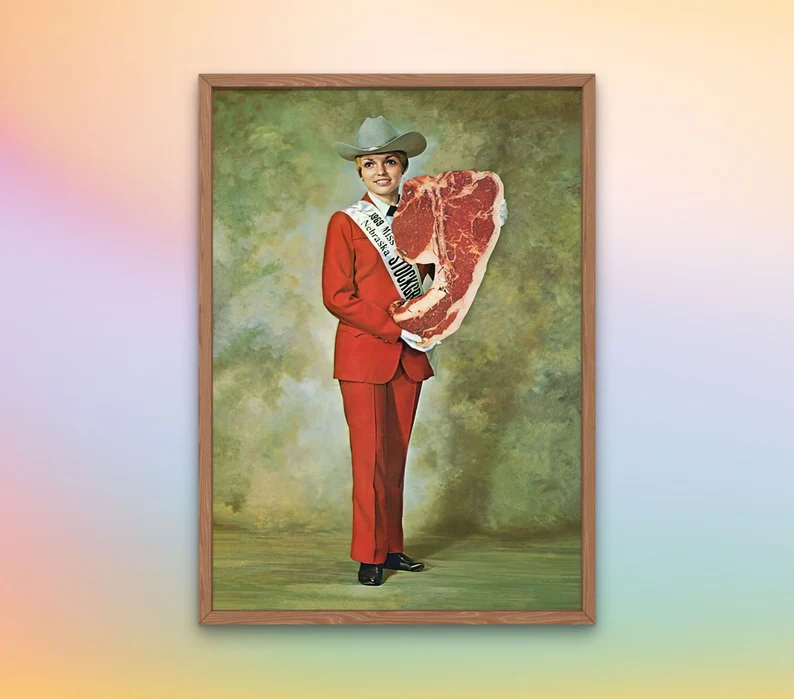
BeverlyNoelle – Glamorous Miss Beef Art Print
6. Displaying Fun Sayings and Puns
Kitschy kitchens thrive on personality, and what better way to express that than through words? Neon signs with cheeky sayings, framed puns related to cooking and eating, or even DIY message boards where you can post the menu or a quote of the day inject humor and warmth into the space. These touches make the kitchen feel lived-in and loved.

DoTakeItPersonally – Kitchen Towels with Funny Sayings
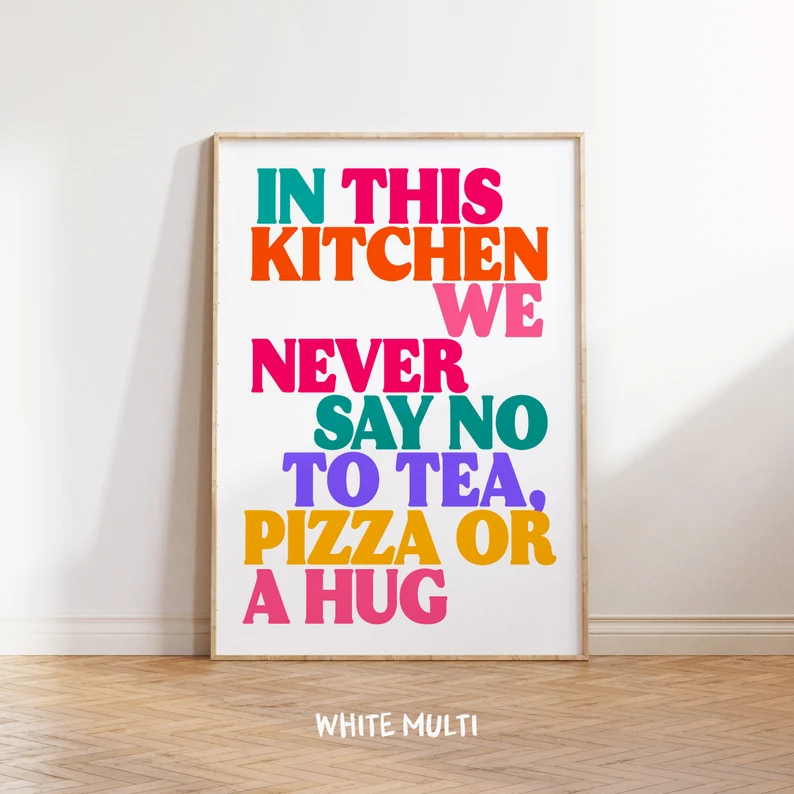
PinkGiraffePrintCo – In This Kitchen Print (Change the Words!)
Balancing Kitsch with Cohesion: A Strategic Approach
While diving headfirst into the kitschy kitchen trend, it’s wise to keep some elements grounded. Main cabinets and backsplash areas serve as the perfect neutral canvases against which the vibrant kitsch elements can sing. Opting for whites, creams, or light woods in these areas ensures that the space feels balanced and not overly chaotic. This strategic approach also allows for an easy transition back to a more subdued aesthetic should your design tastes evolve.
Conclusion: Celebrating Individuality in Kitchen Design
The kitschy kitchen trend is more than just a rebellion against the sleek, impersonal kitchens that have become commonplace. It’s a celebration of individuality, a homage to the past, and a bold statement of what home decor can be when we let go of conventions. By incorporating vibrant colors, mixing patterns, choosing funky accessories, incorporating retro pieces, hanging art, and displaying fun sayings, homeowners can create a space that’s as unique as it is welcoming. And with the thoughtful inclusion of neutral cabinets and backsplashes, reverting to a more traditional look remains a simple, hassle-free option. In the end, a kitschy kitchen is not just about embracing “bad taste”; it’s about celebrating the joy and quirkiness that make life—and cooking—a delightful adventure.



